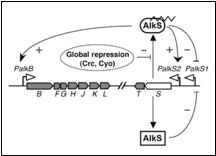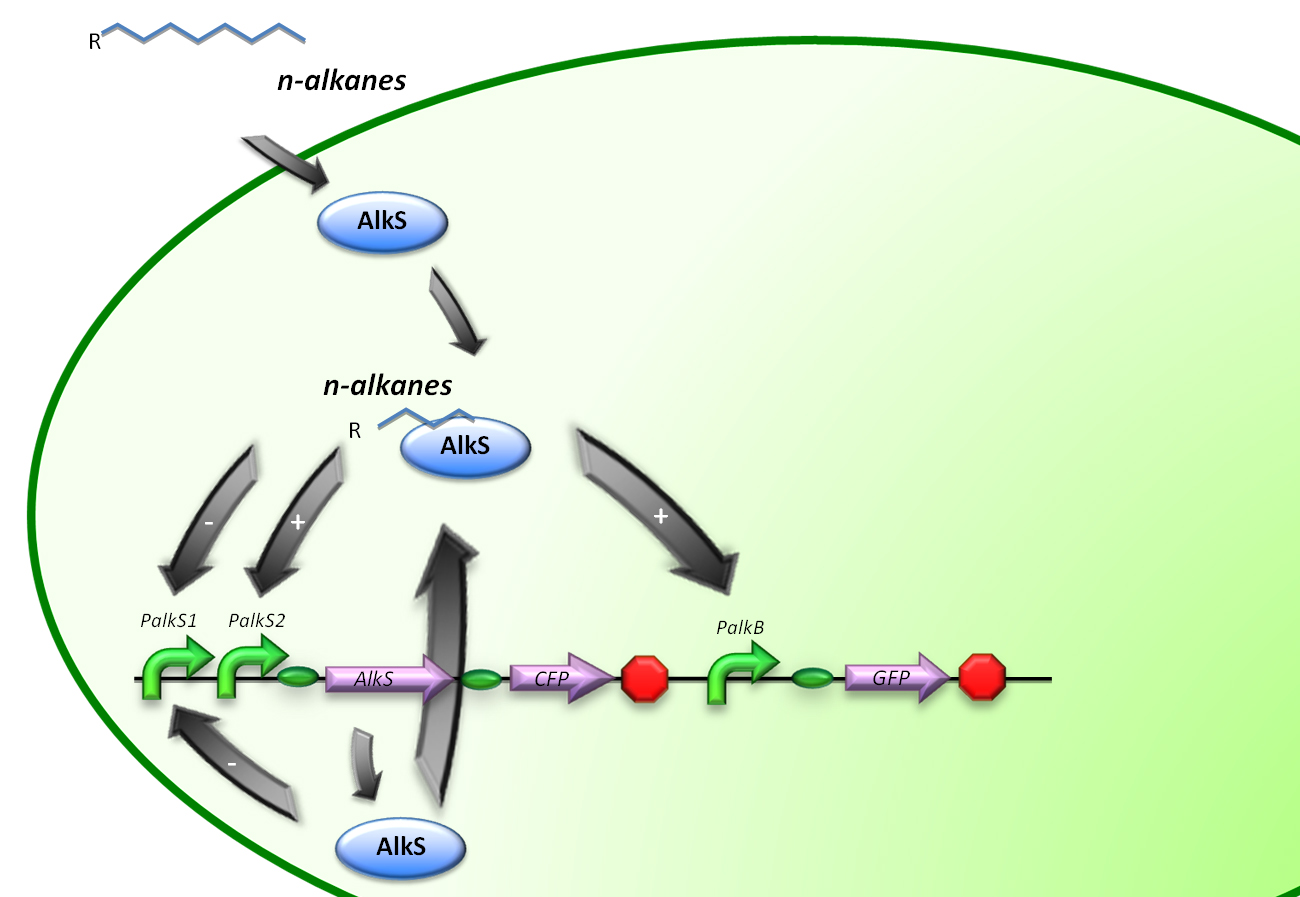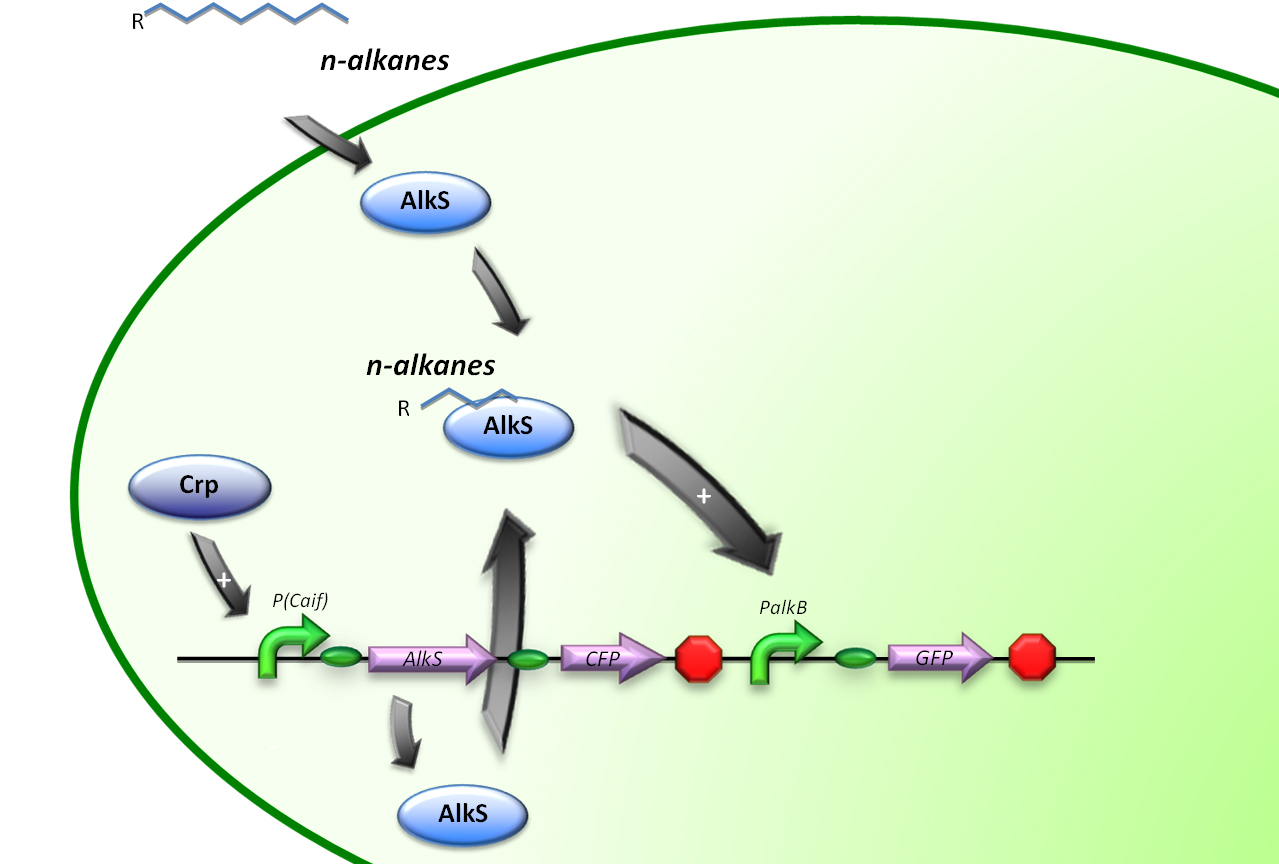Team:TU Delft/Project/sensing/parts
From 2010.igem.org
(→BioBricks, the making of) |
(→Control by Crp) |
||
| Line 22: | Line 22: | ||
The expression of alkane degrading genes in our second ''E.coli'' regulatory system will be regulated by making the alkane-degrading genes sensitive to Crp. The global regulator protein Crp binds to regions of promoters known to activate genes involved in the degradation of non-glucose carbon sources, in this way activating the genes downstream of it. | The expression of alkane degrading genes in our second ''E.coli'' regulatory system will be regulated by making the alkane-degrading genes sensitive to Crp. The global regulator protein Crp binds to regions of promoters known to activate genes involved in the degradation of non-glucose carbon sources, in this way activating the genes downstream of it. | ||
| - | For the induction of alkane-degradation genes in this construct the BioBrick consisted out of the P(CaiF) promoter, AlkS gene and PalkB gene. | + | For the induction of alkane-degradation genes in this construct the BioBrick consisted out of the P(CaiF) promoter, AlkS gene and PalkB gene. (figure 2) |
| - | [[Image:BB P(Caif) RBS AlkS TT PalkB GFP TT.jpg|600px|thumb|center|'''Figure | + | [[Image:BB P(Caif) RBS AlkS TT PalkB GFP TT.jpg|600px|thumb|center|'''Figure 2''' – Schematic description of the alkane sensing pathway with the corresponding genes.]] |
Revision as of 09:48, 13 September 2010
BioBricks, the making of
Catabolite repression control
BioBrick: PalkS12-RBS-CFP-TT-PalkB-GFP-TT
In Pseudomonas putida, the AlkS transcriptional regulator activates the expression of its own gene, and that of alkT, from a promoter named PalkS2 in the presence of alkanes. This allows achieving AlkS levels that are high enough to activate the expression of the alkBFGHJKL operon from the PalkB promoter. AlkS recognizes C5–C10 n-alkanes as effectors, but does not respond to shorter or larger alkanes (Rojo et al. 2009) (fig.1)
In stead of using all the alkBFGHJKL genes, a GFP will be introduced into our system to check the functionality of the PalkB promoter in E.coli. (figure 1)
Therefore, the first construct is suitable for the analysis of transcriptional activity over the PalkS promoter. A plasmid containing the AlkS-PalkS-PalkB regulatory mechanism will be coupled to GFP and RFP generators in order to determine transcriptional activities of PalkS and PalkB at varying hydrocarbon concentrations by measuring fluorescence.
Control by Crp
BioBrick: P(Caif)-RBS-AlkS-TT-PalkB-GFP-TT
The expression of alkane degrading genes in our second E.coli regulatory system will be regulated by making the alkane-degrading genes sensitive to Crp. The global regulator protein Crp binds to regions of promoters known to activate genes involved in the degradation of non-glucose carbon sources, in this way activating the genes downstream of it.
For the induction of alkane-degradation genes in this construct the BioBrick consisted out of the P(CaiF) promoter, AlkS gene and PalkB gene. (figure 2)
 "
"


